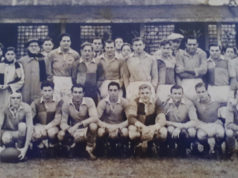A couple of weeks ago, Mayor Mike Moncrief declared at a city council meeting that Fort Worth had not euthanized a single adoptable pet since the city set up a pet adoption center at a local PetSmart store.
If that sounds like good news, it is. But consider the word “adoptable.” It leaves enough wiggle room to gloss over the fact that Fort Worth still kills hundreds of dogs and cats each month — including many that animal advocates believe could be saved.
Suzette Watkins, who owns Riverside Kennel, is one of those who applauds the Petsmart partnership but thinks the city can do better. She went back to city council on Tuesday to ask that Fort Worth adopt a no-kill policy that would preclude shelters from euthanizing any animal that could be medically rehabilitated or re-trained.
 She didn’t get the policy. But Moncrief did agree that the city should explore the idea, by looking at how the Austin shelters, which are working toward non-kill status, operate.
She didn’t get the policy. But Moncrief did agree that the city should explore the idea, by looking at how the Austin shelters, which are working toward non-kill status, operate.
“It doesn’t surprise me that the mayor would want to look into it,” said Watkins, who has been a fierce critic of the city on many issues. “But I don’t think with the current leadership at the shelter that anything no-kill will ever be implemented here. It would take a changing of the guard.”
The no-kill movement has been embraced in many other cities around the country, including Austin, San Francisco, and Reno. In each of those cities, the rate at which shelter animals are killed has dropped dramatically. The movement is based on key changes to traditional practices at animal shelters. They include a program for trapping, neutering, and then releasing feral cats; creation of a high-volume, low-cost spay and neuter program for dogs and cats; and cultivation of a network of foster families who would care for dogs that aren’t considered adoptable but also aren’t considered dangerous. While no-kill is the goal, animals that can’t be saved are still euthanized.
Brandon Bennett, the city’s director of code compliance, said that the Fort Worth shelter already adheres to many of the no-kill guidelines. However, he believes that the cost of the full program would deter the council from implementing the more expensive parts of the model. “It isn’t my money, it’s the taxpayers’ money,” he said. “If the demand isn’t there to adopt dogs, then conceivably we would be keeping dogs that wouldn’t have a high probability of being adopted for a very long time, at the taxpayers’ expense.”
Hiring veterinarians to treat serious illnesses would also cost a lot of money. “We would have to identify the costs of those things and present them to the council as a part of an annual budget. Then it would compete with other projects.”
The most difficult step is convincing civic leaders to embrace the model, said Mike Fry of Animal Ark, a Minnesota-based nonprofit, no-kill shelter.
“The hard part is getting leadership to take [the practice of] killing healthy animals off the table and pursue every other option,” he said. “And that requires a fundamental change of culture. How difficult it is just depends on how long the entrenched folks want to hang on to their old ways.”
Bennett believes that making the city’s shelter a completely no-kill operation is unrealistic, because they cannot turn animals away.
“Is it realistic for a municipal government to move to an absolute no-kill [policy]? Really it’s not,” he said. “We have to pick up all of the animals that are sick, injured, have been cruelly treated, have been abandoned, and so on.
“Oftentimes we come across animals that have been struck by cars, or suffer from such a level of malnutrition that they have organ failure, or have been used for fighting and are so aggressive they could never be adopted out,” he said.
He said that his department will evaluate what is being done in Austin, but he doesn’t believe that city is the no-kill model that many advocates make it out to be.
“Austin is not a no-kill shelter,” he said. “They have no-kill goals, but they haven’t been able to achieve them. San Antonio is the same way,” he said. “They’re like us — depending on the condition of the animal, the humane thing to do, sometimes, is to euthanize them.”
Fry said that implementing a no-kill policy would actually save the city money and work. “From a financial perspective, the average cost of housing one feral cat, killing it, and disposing of the body is about $100,” he said. “You can [trap-neuter-release] a cat for $35. It’s less work, and it’s more cost-effective.”
Watkins said city leaders “are not interested in going that route. They don’t think it works.” Embracing that model would take away the city’s fund-raising tactics of playing on the perception that the shelter is overrun with animals, she said.
“The old-school thinking is, let’s set up fund-raising on the fact that the public overloads us with so many dogs and cats — if you’d only give us more money, we could do better.”
She also rejects the city’s claim that no adoptable animal has been put to death since the PetSmart center opened.
According to documents that Watkins got from the city, between June 1 (a little over a month after the PetSmart adoption center opened) and Sept. 1, the city euthanized 2,716 dogs, or about 63 percent of those impounded.
Bennett said that the city uses a national guideline for determining whether a pet is adoptable, as well as the opinion of the shelter’s highly trained and experienced staff. He said that since the PetSmart center opened, the rate of adoptions from the city animal shelter has doubled, and a second adoption center is being planned at another PetSmart location.
Ryan Clinton, who founded the Austin-based animal advocacy group, FixAustin, is also skeptical of the claim of Fort Worth officials that no adoptable dogs have been euthanized since the opening of the pet adoption center. But, he said, the city does deserve credit for starting the program.
“I’ve seen press accounts that have said [they] haven’t killed a single adoptable animal since the program started. That’s, frankly, extremely hard to believe,” he said.
Clinton said the no-kill program saves money by reducing the number of animals coming in and out of a shelter. “The way you reduce animals coming in is you do low-cost or free spay and neuter programs,” he said. “Studies have actually shown that most people who can afford to spay or neuter their animals are already doing so. So blaming the public doesn’t work.”
He also said that the trap-neuter-release program for cats has netted good, though unquantifiable, results in Austin. “It has been proven in study after study that if you go collect feral cats, bring them to the pound, and kill them, they will be replaced in their eco-system,” he said. “So it is useless to round them up and kill them.”
One supervisor for the Humane Society of North Texas, who asked that her name not be printed, said that she is intellectually in favor of no-kill, but that it’s cost-prohibitive. She said that the Humane Society shelter would need an additional $400,000 in funding for more space and medication in order to implement that policy in its own shelters. The HSNT shelter in Fort Worth currently cares for 500 animals a day and receives more than 200 new animals on an average day. In many cases, the shelter cannot treat severely sick animals.
“Yesterday, I offered to spay and neuter animals for a family so they would stop bringing me buckets of puppies,” she said. “They dropped me off a litter of puppies that were in terrible condition. I had no choice but to euthanize them. When they come to me that ill, there’s not a lot I can do for them.”
According to city records, since April 22, when the PetSmart program started, adoptions have doubled, with between four and five adoptions per day through PetSmart.
Bennett said that there are a few trap-neuter-release programs in Fort Worth, but none run by the city. Implementing such a program might require a change in city ordinance, he said. “We’ll probably have to tackle the ordinance issue next spring or summer.”
He also said that the city is looking into the cost of converting a section of the shelter into an isolation ward, so that dogs with aggressive behavior or contagious illnesses can be saved. A local charity, which he declined to name, has committed to paying for an animal behaviorist to come in and train the staff on how to determine whether or not a dog’s behavioral issues can be remedied. A foster care program that could save many animals is also in the works, he said.
“We get some puppies that are not old enough to be adopted, or the mother is sick, so we have rescue groups that will care for the puppies until they can be adopted,” he said. “We would provide, free of charge, spay and neutering, the micro-chipping, and the licensing, so they’d be readily adoptable.”
He also said that city staff plans to get community input on a trap-neuter-release program. “We’re going out to [learn] from the community how they feel about it,” he said.











